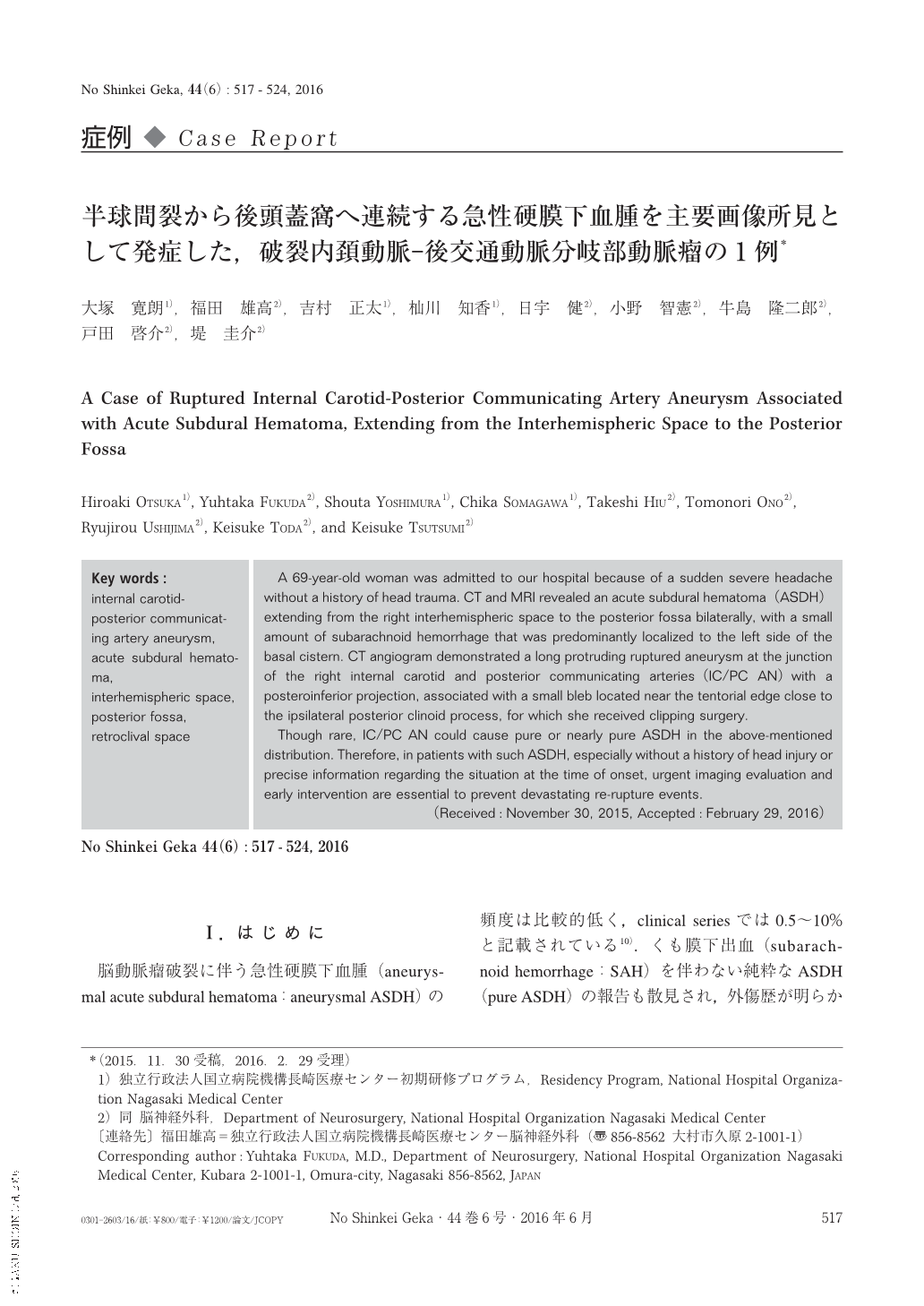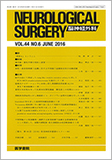Japanese
English
- 有料閲覧
- Abstract 文献概要
- 1ページ目 Look Inside
- 参考文献 Reference
Ⅰ.はじめに
脳動脈瘤破裂に伴う急性硬膜下血腫(aneurysmal acute subdural hematoma:aneurysmal ASDH)の頻度は比較的低く,clinical seriesでは0.5〜10%と記載されている10).くも膜下出血(subarachnoid hemorrhage:SAH)を伴わない純粋なASDH(pure ASDH)の報告も散見され,外傷歴が明らかではない救急患者の初期診療における留意点として,強調されてきた13).
最近,同側の大脳半球間裂から両側後頭蓋窩に及ぶASDHを主要画像所見として発症した,破裂内頚動脈-後交通動脈分岐部動脈瘤(internal carotid-posterior communicating artery aneurysm:IC/PC AN)の1例を経験した.非典型的な血腫分布を呈する極めて稀な症例であり,文献的考察を加えて報告する.
A 69-year-old woman was admitted to our hospital because of a sudden severe headache without a history of head trauma. CT and MRI revealed an acute subdural hematoma(ASDH)extending from the right interhemispheric space to the posterior fossa bilaterally, with a small amount of subarachnoid hemorrhage that was predominantly localized to the left side of the basal cistern. CT angiogram demonstrated a long protruding ruptured aneurysm at the junction of the right internal carotid and posterior communicating arteries(IC/PC AN)with a posteroinferior projection, associated with a small bleb located near the tentorial edge close to the ipsilateral posterior clinoid process, for which she received clipping surgery.
Though rare, IC/PC AN could cause pure or nearly pure ASDH in the above-mentioned distribution. Therefore, in patients with such ASDH, especially without a history of head injury or precise information regarding the situation at the time of onset, urgent imaging evaluation and early intervention are essential to prevent devastating re-rupture events.

Copyright © 2016, Igaku-Shoin Ltd. All rights reserved.


